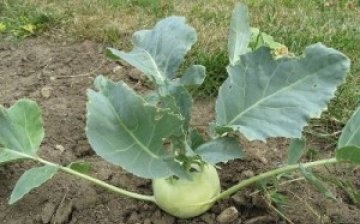Kohlrabi cabbage is a healthy vegetable in the garden bed
Cabbage is one of the most common vegetables in our country. It is quite simple to grow it, and due to its availability in the store, it is more than an attractive vegetable. In addition, there are a lot of varieties of cabbage - white cabbage, blue, cauliflower, Peking cabbage, broccoli, kohlrabi. Each of these types is useful in its properties, although in appearance they differ significantly from each other.
Kohlrabi cabbage is not often grown in backyard plots and it is in vain, because it is very useful due to its B, A, E, C, K, PP vitamins, beta-carotene, trace elements - calcium, magnesium, sodium, potassium, phosphorus, sulfur, chlorine and other useful microelements. Kohlrabi cabbage is very often called northern lemon, because 120 g of kohlrabi contains a daily dose of vitamin C.
In appearance, kohlrabi cabbage looks like a root crop - a kind of large radish that is eaten.
Kohlrabi cabbage is grown by seedling and sowing, and can also be grown in greenhouses or outdoors. For its growth, moist soil is necessary, and it is necessary to fertilize this vegetable crop with humus or compost. Particular attention should be paid to loosening the soil, which also retains moisture.
If the seeds are sown directly into open ground, then after the appearance of the first leaf, the cabbage must be broken through. The optimal distance between plants is 10-15 cm for the first breakthrough and 15-20 cm for the second. The second time kohlrabi cabbage break through in a month.
The grown kohlrabi cabbage in this way will be suitable for long-term storage.



